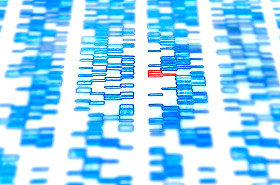Genetic Modifiers of Clinical Outcomes
PI: N. Hanchard, A. Wonkam, G. Lettre
Team Investigator by site : TBA
Aims:
-
Genetics of HbF
-
Genetics of hemolysis
-
Genetics of kidney function
-
Population genetics
Rationale SCD offers a unique opportunity because it is essentially due to a single mutation (HbS for sickle cell anemia). Therefore, we can exclude the nature of the mutation itself as a modifier of severity. Thus remain genetic factors acting in trans (or cis) and environmental stimuli/interventions as topics to understand clinical heterogeneity in SCD. We strongly argue that if we are to make significant progress in understanding the disease and treating patients, we need to better grasp the genetic contribution to inter-patient clinical variability.
 Our hypothesis is that some of the phenotypic variation observed in SCD patients is due to genetics, and by deciphering this genetics we might find unexpected ways (validated through evolution and human development) to intervene and treat SCD. This hypothesis is supported by the two known modifiers of SCD: HbF production and alpha-thalassemia status. Importantly, along with management of infection these genetic factors are the strongest modifiers of SCD severity and studies of HbF production have given rise to the only drug currently being used to manage SCD (hydroxyurea).
Our hypothesis is that some of the phenotypic variation observed in SCD patients is due to genetics, and by deciphering this genetics we might find unexpected ways (validated through evolution and human development) to intervene and treat SCD. This hypothesis is supported by the two known modifiers of SCD: HbF production and alpha-thalassemia status. Importantly, along with management of infection these genetic factors are the strongest modifiers of SCD severity and studies of HbF production have given rise to the only drug currently being used to manage SCD (hydroxyurea).
B.1 Genetics of HbF The known variants related to HbF explain only 50% of the genetic variation and the largest study to date was carried out in ~1,500 patients. Cohorts exist in North America to replicate associations and the expertise is available to functionally characterize new discoveries. BCL11A is a powerful illustrative example, going from genetic association to functional characterization and potentially new therapeutic strategies. Of note, there is also a possibility that there are Africa-specific HbF modulators, which we would be in a better position to identify with our study. While thinking about the design of a study to examine these questions, it is important to remember that HbF measures are generally not used in children B.2 Genetics of hemolysis Assuming that the outstanding challenges in generating a clear and robust hemolysis phenotype across our patients can be overcome, genetic data from the clinical cohort can be used to find variants associated with hemolysis. These variants could be tested, along with the HbF variants, in a predictive model of severity. B.3 Genetics of kidney function In North America, kidney failure is the main cause of death in adult SCD patients. We know that there is a genetic contribution given the difference in incidence between individuals of European vs. African ancestry and the recent ApoL1/MYH9 finding. Richard’s group also has a grant to do renal function-related work in Nigeria, which demonstrates feasibility. Renal function is a relatively tractable phenotype because it is clinically important and has appropriate endo-phenotypes that are straightforward to measure (creatinine, micro-/macro-albuminuria). On the other hand, it is well recognized that levels of creatinine are likely to underestimate the reduction in glomerular filtration given low muscle mass in patients with SCD. The serum level of cystatin-C has some promise as another marker of renal dysfunction. Replication for findings related to renal function could be sought in existing US cohorts. B.4 Population genetics Potential questions include: 1. What is the relationship between haplotypes across the beta-globin cluster and a) SCD complications; b) long-range beta-globin haplotypes? – It has long been speculated that cis-acting factors defined by local haplotypes around the HbS mutation correlate with disease severity (beyond hbF regulation); however, identification of such factors has remained equivocal for lack of sufficient data - extensive clinical and laboratory phenotyping together with dense, high-level genetic data should facilitate a definitive answer to this long-sought-after question. Further, how these local haplotypes, classically considered to have independently arisen at the same time in history, correlate with recent findings of extended long-range HbS haplotypes, is an important question that may have profound implications for the evolutionary history of HbS.
 2. To what extent do modifiers of SCD severity (HbF, and potentially alpha-thalassemia, G6PD, or hemolysis markers), influence overall SCD survival in Africa? A prospective birth cohort or “cross-sectional” survey across different age groups (where older individuals are by definition “survivors”) would offer unique opportunities to answer this question.
2. To what extent do modifiers of SCD severity (HbF, and potentially alpha-thalassemia, G6PD, or hemolysis markers), influence overall SCD survival in Africa? A prospective birth cohort or “cross-sectional” survey across different age groups (where older individuals are by definition “survivors”) would offer unique opportunities to answer this question.
Ultimately, in the long-term, this could be the nidus for a personalized approach to SCD, viz, can genotyping a handful of markers identify those patients at greater risk of death?
3. What is the relationship between SCD, HbF production (and its genetic modifiers) and malaria? Is there evidence of selection at these alleles that might account for the relative commonality of HbF modifier alleles?
